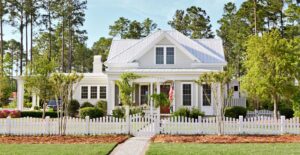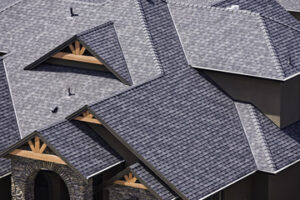A septic system is an integral part of your home wastewater treatment system. It contains Septic Tank Armadale perforated drain pipes and absorption trenches.

As the wastewater passes through the septic tank solids (sludge) sink and undergo bacterial digestion. Watery effluent flows from the tank to perforated drainpipes buried in the absorption field or leach field.
A septic tank is a large, underground watertight container that receives all of the wastewater from your home’s plumbing system. This waste is everything that goes down your toilets, showers, and sinks.
When wastewater enters the septic tank, it undergoes a process of settling and separation. This allows heavier solids to fall to the bottom of the tank, where they are known as sludge. Lighter materials, such as grease and oil, float to the top of the wastewater, where they are known as scum. This separation is key to reducing harmful bacteria in your household wastewater.
The septic tank also allows wastewater to be partially broken down by microorganisms that naturally occur in household waste. This is important because it reduces the amount of sewage that is eventually discharged into the soil, which protects surface and groundwater from contamination.
Over time, sludge accumulates in the septic tank until it reaches a certain level. This is when your septic tank will need to be pumped out. It is important that you have your septic tank pumped regularly, because the accumulated sludge can cause the septic system to become overloaded and ineffective.
Once the septic tank is emptied, clean water exits through an outlet pipe to a drain field. This is usually a network of perforated pipes that are buried underground, and is often called the soil drainfield or leachfield. The septic tank effluent passes through the buried pipes and into the surrounding soil, where it undergoes final treatment and absorption into the groundwater.
The septic tank is the first part of your septic system. All the interior plumbing in your house drains into it, including toilets, bathtubs, sinks, and washing machines. You should never flush anything other than human waste and toilet paper into a septic tank, because it can damage the system and clog your plumbing. This includes products like handi-wipes, which are advertised as ‘flushable’ but can actually clog your septic system.
Bacteria in the septic tank generate gases as they break down wastewater contaminants. These gases (most commonly hydrogen sulfide) must be vented to prevent a build-up of pressure that could stop or reverse the flow of wastewater, and to reduce unpleasant odors. The septic tank vent is usually a mushroom-shaped cap, and may be fitted with a charcoal filter to further reduce odors.
How does a septic tank work?
A septic tank works as an anaerobic (no oxygen) environment that is filled with beneficial bacteria and enzymes. The bacterial and enzyme mixture breaks down the solid waste to liquid waste as it flows through the septic system.
When wastewater leaves your home it flows down the drain pipes into the septic tank. As the waste enters the septic tank it separates into three layers, with the heavier solids falling to the bottom of the tank (sludge), the grease and oil rising to the top of the tank (scum) and the partially clarified liquid at the middle of the tank (effluent).
The septic tank is divided by a half wall so that solid waste stays in the first chamber while wastewater passes over the half wall into the second chamber. Once the septic tank reaches capacity it is usually full of solid waste and the sludge layer. This means that the septic tank needs to be pumped.
As the solids break down they create methane gas and sludge which settle at the bottom of the tank. This sludge must be removed from the septic tank regularly as it can clog the absorption field.
At the same time microorganisms in the septic tank are breaking down the rest of the sewage contaminants. As they break down these contaminates they generate gases, including hydrogen sulfide which smells like rotten eggs. This gas and any odors must be released to prevent a build-up of pressure which could stop or reverse the flow of the wastewater. This is done through a vent pipe which extends out from the lid of the septic tank.
Once the wastewater reaches the end of the septic tank it enters the drainfield or soakaway where it starts to filter through soil. This natural process removes harmful viruses, bacteria, nutrients and other organic matter. The water then discharges into groundwater, completing the treatment cycle.
Because a septic tank is a very basic form of sewage treatment you need to be careful what you send down your drains. For example, you should not flush things that can’t be broken down by the bacteria in your septic tank such as non-flushable wipes, diapers, pharmaceuticals, cat litter and paint thinners. You should also keep the drainage area free of trees and bushes whose roots can clog the absorption field.
What should I do if my septic tank needs to be pumped?
Ideally, septic tanks should be pumped every three to five years. This is a general rule of thumb that can be adjusted based on the tank size, family size and use. It is also a good idea to keep track of when the tank was last emptied. You may be able to get this information from the previous owners or ask your septic service company.
Some signs that your septic tank needs to be pumped include slow drainage, gurgling drains or foul odors. A clogged toilet or sink is the most concerning sign, as it can cause sewage to back up into your home. If you are experiencing this issue it is important to call a septic service professional right away.
Another sign of a septic tank that needs to be pumped is when the sludge layer is within six inches of the bottom of the tank outlet. This can cause the septic solids to overflow into the drain field and clog pipes, soil and distribution boxes.
If you are unsure when your septic tank will need to be pumped, ask your septic service professional to inspect it and tell you its condition. A septic service professional will be able to determine the sludge and scum levels as well as the tank size. They can then give you an accurate schedule of when the septic tank will need to be emptied.
A septic tank should be installed with risers that extend up to the surface to allow easy access and inspection. This will eliminate the need to dig down to the septic tank and make future pumping more cost effective.
It is a good idea to keep a map of your septic system with the location of the tank marked on it. This can help you locate the tank when you need to have it pumped or repair the septic system. Never enter a septic tank without proper training. These tanks contain dangerous gasses that can kill a person in a short amount of time. Those who work on septic tanks should always wear protective gear and have a self-contained breathing apparatus.
Why should I have my septic tank pumped?
Septic tanks are ideal for rural or remote areas, offering independence from municipal sewage systems and cost savings in the long run. They’re also environmentally friendly, with on-site wastewater treatment providing an important natural filter before water re-enters the environment. However, the tank itself requires regular on-site maintenance like pumping to ensure it works properly and prevent environmental issues or costly repairs.
In order to function correctly, a septic system needs the right bacteria to break down solid waste and the other organic materials that wash down your drains. When bacteria are unable to break down the septic tank contents, it will build up and begin to flow into your house, creating the dreaded septic tank odors. Regular septic tank pumping clears away this unwanted material, eliminating the smell and keeping the bacteria in your septic tank where they belong.
A well-maintained septic tank is essential to the function of your home and to your property value. When a potential buyer evaluates your home, they will consider the condition of the septic system in addition to the home itself. If your septic tank is leaking or overflowing, it can cause major problems that require extensive and expensive repairs. Having it pumped regularly will avoid these issues and protect your investment.
When you have your septic tank pumped, it gives professional technicians an opportunity to inspect the entire septic system. This will let them know if there are any problems with the inlet and outlet tees, absorption field, distribution box, or other parts of your septic system. If the professionals detect any issues they can point them out to you and suggest a plan of action to fix them before they become bigger problems.
Getting a septic tank pumped is the most affordable way to keep your septic system working as it should and to protect your property value. It will also help to reduce septic tank odors and protect the environment. The septic tank’s bacteria and organic material are a valuable resource to the surrounding soil. When this material is recycled into the soil, it boosts plant growth and provides food for local birds, squirrels, and other wildlife.


